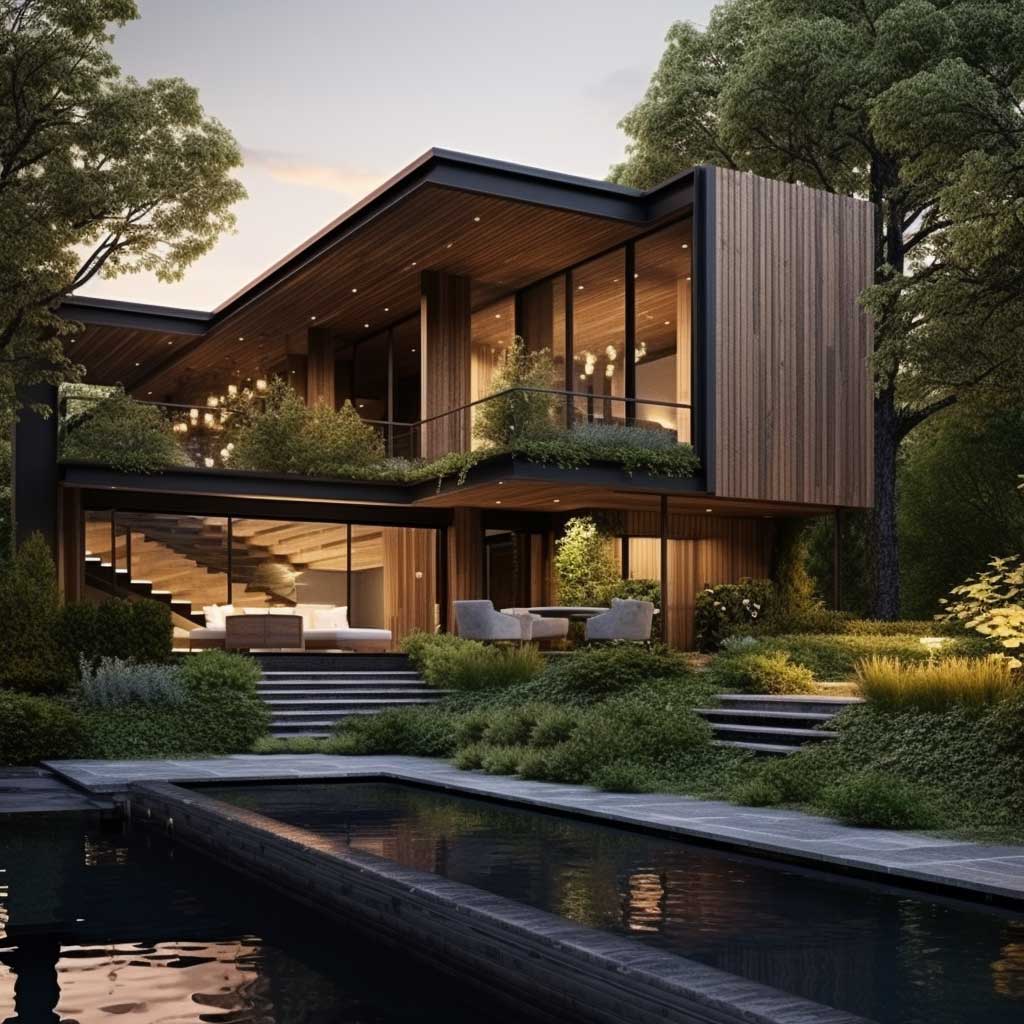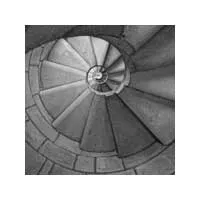In the realm of architectural design, the exterior of a home plays a pivotal role in defining its character and aesthetic appeal. As homeowners and architects become more environmentally conscious, the demand for sustainable materials has surged. Among these, wooden cladding for exterior walls stands out, offering a blend of natural beauty and eco-friendly benefits. This article delves into the world of sustainable wooden cladding, showcasing its versatility and the transformative impact it can have on a home’s exterior.
Innovative Wooden Cladding Techniques Elevating Exterior Aesthetics




The realm of exterior design has witnessed a plethora of innovations in recent years. Among these, the use of wooden cladding for exterior walls stands out, not just for its aesthetic appeal, but for the innovative techniques employed that elevate the overall design narrative.
Wooden cladding, traditionally, was seen as a way to protect homes from the elements while adding a touch of natural beauty. However, with advancements in design and technology, it has transformed into an art form, with innovative techniques pushing the boundaries of what’s possible.
One such technique involves the use of charred wood or Shou Sugi Ban. This ancient Japanese method involves charring the surface of the wood, making it resistant to pests, fire, and decay. The resulting blackened surface adds a dramatic touch to exteriors, making homes stand out.
Another innovative technique is the use of mixed materials. Combining wood with metals, glass, or stones creates a dynamic facade, where contrasts in textures and colors add depth and intrigue. This blend not only enhances the visual appeal but also offers functional benefits, like improved durability and maintenance.
The technique of layering different shades and types of wood is also gaining traction. By juxtaposing light and dark woods or combining smooth and textured surfaces, designers create a multi-dimensional facade that plays with light and shadow, creating a dynamic visual experience.
Lastly, the integration of greenery with wooden cladding is a technique that’s gaining popularity. Whether it’s through vertical gardens, hanging planters, or integrated plant beds, the combination of wood and greenery creates a living facade that’s ever-evolving and deeply connected to nature.
Innovative wooden cladding techniques for exterior walls are redefining the boundaries of design. They showcase the versatility of wood as a material and the endless possibilities it offers. As homes become canvases for artistic expression, these techniques ensure that they remain at the forefront of design innovation.
Revitalizing Home Facades with Sustainable Wooden Cladding




The architectural landscape is constantly evolving, with innovations aiming to enhance both aesthetics and sustainability. One such innovation that has gained significant traction in recent years is the use of wooden cladding for exterior walls. This design choice not only revitalizes home facades but also underscores a commitment to environmental responsibility.
Wood, as a material, has always been revered for its natural beauty and versatility. When used as cladding for exterior walls, it offers a unique blend of rustic charm and modern elegance. The grains, textures, and hues of wood bring a touch of nature to urban homes, creating a serene and inviting ambiance.
Revitalizing a home’s facade goes beyond mere aesthetics. It’s about creating a protective shield against external elements while ensuring the structure remains breathable. Wooden cladding serves this dual purpose. It offers insulation, keeping homes warm in winters and cool in summers, and its natural properties allow for adequate ventilation, preventing moisture buildup.
Sustainability is at the heart of wooden cladding. As concerns about deforestation and environmental degradation grow, it’s imperative to choose wood sourced from responsibly managed forests. Certified timber, reclaimed wood, and wood from fast-growing trees are popular choices for cladding, ensuring minimal environmental impact.
Moreover, wooden cladding requires minimal maintenance. With the right treatment and finishes, it can withstand harsh weather conditions, pests, and decay. Over time, as the wood ages, it develops a patina, adding character to the home’s facade.
Incorporating wooden cladding for exterior walls is a testament to timeless beauty and sustainable living. As homeowners seek to revitalize their living spaces, this design choice offers a perfect blend of form and function, making homes not just visually appealing but also eco-friendly.
Harmony of Nature and Design in Wooden Cladding Exteriors




The essence of great architectural design lies in its ability to harmonize with its surroundings. Wooden cladding for exterior walls epitomizes this harmony, bridging the gap between nature and human-made structures.
Nature has always been a source of inspiration for designers. The patterns, colors, and textures found in the natural world offer endless possibilities. Wooden cladding, with its inherent beauty, captures this essence, making homes feel more organic and in tune with nature.
The harmony achieved through wooden cladding is multi-faceted. On a visual level, the wood seamlessly blends with the surrounding landscape, whether it’s amidst dense forests, open plains, or urban jungles. The natural tones of wood complement various architectural styles, from traditional to contemporary, adding warmth and character.
On a sensory level, wooden cladding offers tactile pleasure. The feel of natural wood, with its grains and imperfections, provides a stark contrast to the cold, impersonal materials often used in modern construction. This tactile experience enhances the overall living experience, making homes feel more welcoming.
Furthermore, wooden cladding promotes environmental harmony. Wood, as a renewable resource, has a lower carbon footprint compared to other construction materials. When sourced responsibly, it supports forest conservation efforts, ensuring a greener future.
Wooden cladding for exterior walls is more than a design trend; it’s a celebration of the harmony between nature and design. As we strive to create homes that resonate with our surroundings, wooden cladding emerges as a frontrunner, championing sustainability and aesthetic brilliance.
Eco-friendly Wooden Cladding Transformations for Modern Homes




The modern architectural landscape is characterized by a shift towards sustainability. As environmental concerns take center stage, the use of wooden cladding for exterior walls has emerged as a popular choice for eco-friendly home transformations.
Modern homes, with their sleek lines and minimalist aesthetics, often run the risk of appearing cold and impersonal. Wooden cladding introduces warmth, breaking the monotony with its rich textures and hues. But beyond aesthetics, it’s the eco-friendly nature of wood that makes it a preferred choice for modern homeowners.
Wood, as a biodegradable and renewable resource, has a significantly lower environmental impact than many other building materials. Its production requires less energy, and it acts as a carbon sink, absorbing and storing carbon dioxide from the atmosphere.
Moreover, advancements in wood treatment and finishing techniques have enhanced the durability and longevity of wooden cladding. This means that homes can enjoy the beauty of wood without frequent replacements, further reducing the environmental impact.
Modern homes also prioritize energy efficiency, and wooden cladding plays a pivotal role in this. With its natural insulating properties, wood helps regulate indoor temperatures, reducing the need for artificial heating or cooling. This not only lowers energy consumption but also results in significant cost savings in the long run.
The transformation of modern homes with wooden cladding for exterior walls is a reflection of a broader shift towards sustainable living. As we move towards a future where every design choice is weighed against its environmental impact, wooden cladding stands out as a beacon of eco-friendly innovation.
The Art of Blending Sustainability and Elegance in Exterior Wall Cladding




In the world of architecture and design, striking a balance between sustainability and elegance is often a challenging endeavor. However, the rise of wooden cladding for exterior walls has seamlessly bridged this gap, offering a solution that is both environmentally responsible and aesthetically pleasing.
Wood, with its timeless appeal and natural charm, has always been a favorite among architects and homeowners. When used as cladding for exterior walls, it transforms the facade, adding depth, texture, and character. But beyond its visual appeal, wood stands as a symbol of sustainability in modern construction.
The elegance of wooden cladding is undeniable. Each plank, with its unique grain pattern and hue, tells a story of nature’s artistry. When assembled together on a facade, these individual pieces come together to create a tapestry of natural beauty, making each home distinct and memorable.
But the true artistry lies in the ability of wooden cladding to blend this elegance with sustainability. In an age where deforestation and environmental degradation are pressing concerns, the choice of wood as a building material becomes significant. Opting for sustainably sourced wood, reclaimed timber, or fast-growing varieties ensures that the beauty of the facade doesn’t come at the planet’s expense.
Furthermore, the inherent properties of wood make it an eco-friendly choice. Its natural insulating abilities mean homes are better equipped to handle temperature variations, reducing reliance on artificial heating or cooling systems. This energy efficiency not only reduces carbon footprints but also translates to savings in utility bills.
The art of blending sustainability and elegance in wooden cladding for exterior walls is a testament to the possibilities of modern design. It showcases that with thoughtful choices and a commitment to the environment, homes can be both beautiful and responsible.
Wooden cladding for exterior walls is more than just a design choice; it’s a statement of one’s commitment to sustainability and a love for natural beauty. As we move towards a future where the environment takes center stage, opting for sustainable wooden cladding not only enhances the beauty of our homes but also ensures that we tread lightly on our planet. With its myriad of design possibilities and eco-friendly benefits, wooden cladding is set to redefine the paradigms of exterior home design.






